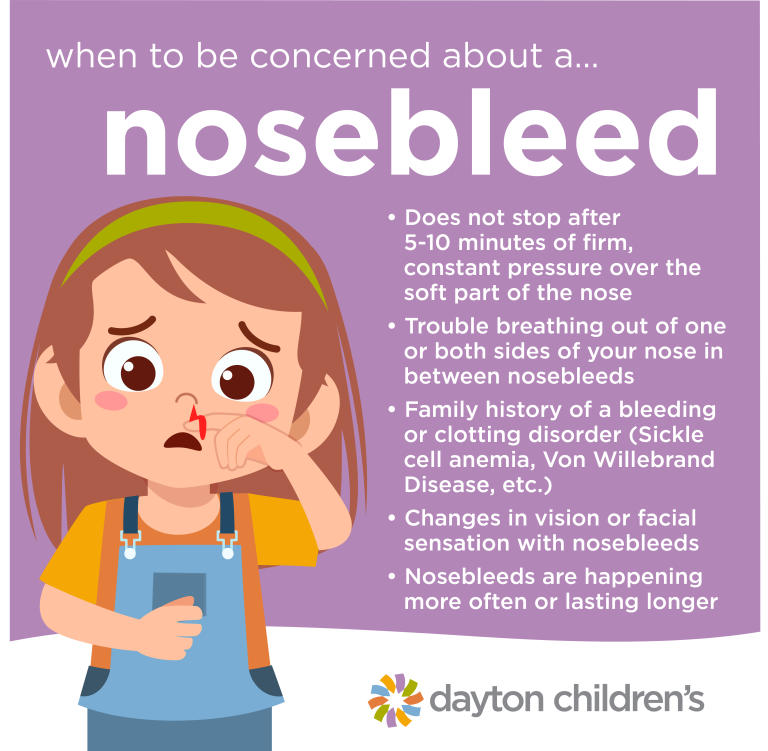3/9/23 blog post
when to be concerned about a nosebleed

in this article:
- What causes nosebleeds?
- Can nosebleeds be prevented?
- When should I be concerned about my child's nosebleed?
Nosebleeds are a common occurrence in childhood, especially in ages 3 to 10 years old. Most often, they’re caused by dry air or nose-picking. While nosebleeds can be scary, most aren’t serious and can be managed at home.
what causes nosebleeds?
Most anterior nosebleeds, which come from the front of the nose, are due to dry air. A dry climate or heated indoor air irritates and dries out nasal membranes. This causes crusts that may itch, then bleed when scratched or picked. Common colds also can irritate the lining of the nose, with bleeding following repeated nose-blowing. Having a cold during dry winter weather is the perfect formula for nosebleeds.
Allergies also can cause problems, as doctors may prescribe medicine (such as antihistamines or decongestants) to control an itchy, runny, or stuffy nose. The medicine can dry out nasal membranes, leading to nosebleeds.
An injury or blow to the nose can also cause bleeding, but most aren't a serious problem. But if your child has a facial injury that causes a bloody nose and you can't stop the bleeding after 10 minutes or have other concerns about the injury, get medical care right away.
can nosebleeds be prevented?
Since most nosebleeds in kids are caused by nose-picking or irritation from hot dry air, using a few simple tips may help your kids avoid them:
- Keep your child's nails short to prevent injuries from nose-picking.
- Keep the inside of your child's nose moist with saline (saltwater) nasal spray or gel, or dab petroleum jelly or antibiotic ointment gently around the opening of the nostrils.
- Run a cool-mist humidifier (or vaporizer) in bedrooms if the air in your home is dry. Keep the machine clean to prevent mildew buildup.
- Make sure your kids wear protective athletic equipment during sports or other activities that could cause a nose injury.
when to be concerned about a nosebleed:
- Does not stop after 5-10 minutes of firm, constant pressure over the soft part of the nose
- Trouble breathing out of one or both sides of your nose in between nosebleeds.
- Family history of a bleeding or clotting disorder (Sickle cell anemia, Von Willebrand Disease, etc.)
- Changes in vision or facial sensation with nosebleeds
- Nosebleeds are happening more often or lasting longer
Your child's primary care provider will guide you on next steps if you’re concerned about your child’s nosebleeds. If it is recommended that your child be seen by a pediatric ENT specialist, you can schedule an appointment online.
Information for this web page provided by Dayton Children's specialists and KidsHealth.





